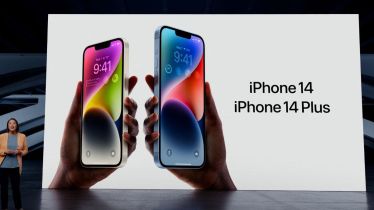Apple may not be the first to introduce the eSIM technology but it surely is going to change the game for other smartphones in the market. Until now the eSIMs were mostly used as substitute for a second SIM but with iPhone 14 completely dropping the physical SIM tray in exchange of an eSIM, the other smartphone making companies can also be expected to join the bandwagon soon.
Apple first introduced the eSIM in 2017 with its Apple Watch Series 3. The iPhone XS, iPhone XS Max, and iPhone XR also come with eSIM support but they all have a physical tray too. The internet is abuzz with information on eSIM, its advantages and drawbacks. We here try to list every eSIM-related query in detail to help you better understand this technology.
What is an eSIM?
The term eSIM stands for Embedded-Subscriber Identity Module. The traditional SIM cards can be seen whereas the eSIM is inbuilt in you phone and can’t be seen. It does not require a SIM tray like the traditional ones. In simple language, it is like an internal memory in your phone which is non-removable but you can save your data. eSIM is also rewritable meaning you can change your operator anytime you want.
To use eSIM, there are two conditions- first your phone should support the technology and second you network is compatible with it. This is because, alike the physical SIMs, you eSIM also requires to be activated digitally by the telecom operator. Not all telecom operators support the technology as of now. In India, Airtel was the first to support this. Jio and Vodafone Idea also offer eSIM service. Jio in 2018 started eSIM activation for iPhone XS, XS Max and iPhone XR.
Contrary to many misconceptions, an eSIM has nothing to do with the internet speeds or better cellular reception. It is just like a digital copy of your SIM card. It is also important to note that the user can’t have both an eSIM and SIM at the same time for the same mobile number.
Another very important point to remember is that it is eSIM are non-swappable. In the case of physical SIMs, you can easily swap your home SIM with another SIM in case you are travelling but that’s not possible with the eSIMs. Also, with eSIM, you will have to contact your network operator every time you want to change your phone. Your eSIM can be paired with both your smartphone and your smartwatch.
Disadvantages of eSIM
As mentioned earlier, eSIMs do not give one the freedom of the physical control of the SIM card. For starters, you cannot take out the SIM card and put it in the new phone anytime you want. The second biggest demerit is that in case your phone gets damaged accidently, you will have to make a substitute operational in order. It also comparatively easier to track eSIMs. While some would find this feature useful in case finding a lost phone, many could be put off by this.
ALSO READ| iQOO Z6 Lite 5G launched with Snapdragon 4 Gen 1, 120Hz display: Check price, details
